Welcome to Knowen!
The gist
Knowen is a flexible framework for creation and organization of knowledge. Inspired by projects like Wikipedia and Stack Exchange, Knowen takes a next step towards creating a verified and comprehensive public knowledge graph -- a hierarchically organized collection wiki pages that can be navigated from the most basic to most specific levels.
Knowen can be used as a productivity tool to create personal or group private knowledge graphs. Those can be made publicly visible by connecting them to the public knowledge graph.
Knowen is designed with researchers in mind. Our goal is to simplify individual research, group collaboration, and sharing with colleagues and the rest of the world.
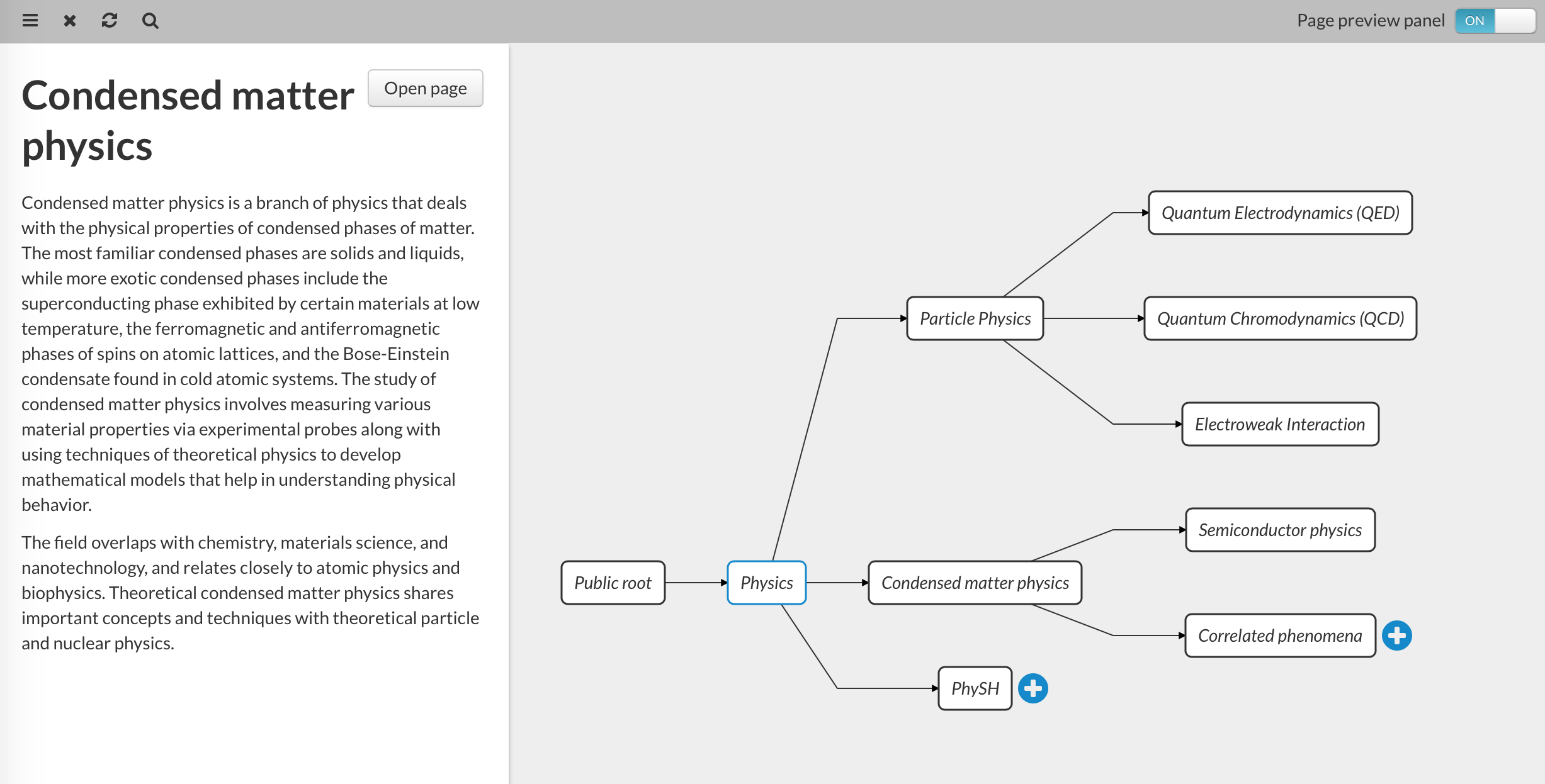
Pages (Nodes)
The basic element of any knowledge graph, private or public, is a page (or node). Every page has a parent page(s) (more general content), can have one or more child pages (more specific content), and can have siblings (children of the same parent(s)).
Ways of navigating the knowledge graph:
- Side bar shows all parents, siblings, and children of the current page
- Graph of pages for overview and quick navigation through the knowledge graph
- Table of contents that shows the page and all of its descendants, including the dates of most recent changes
Page actions:
- View the full history of changes to any page and comment on them
- Export the subgraph of the page (current page and the more detailed ones)
- Edit page (change contents or connections to other pages)
- Create a new page (child or sibling of the current one)
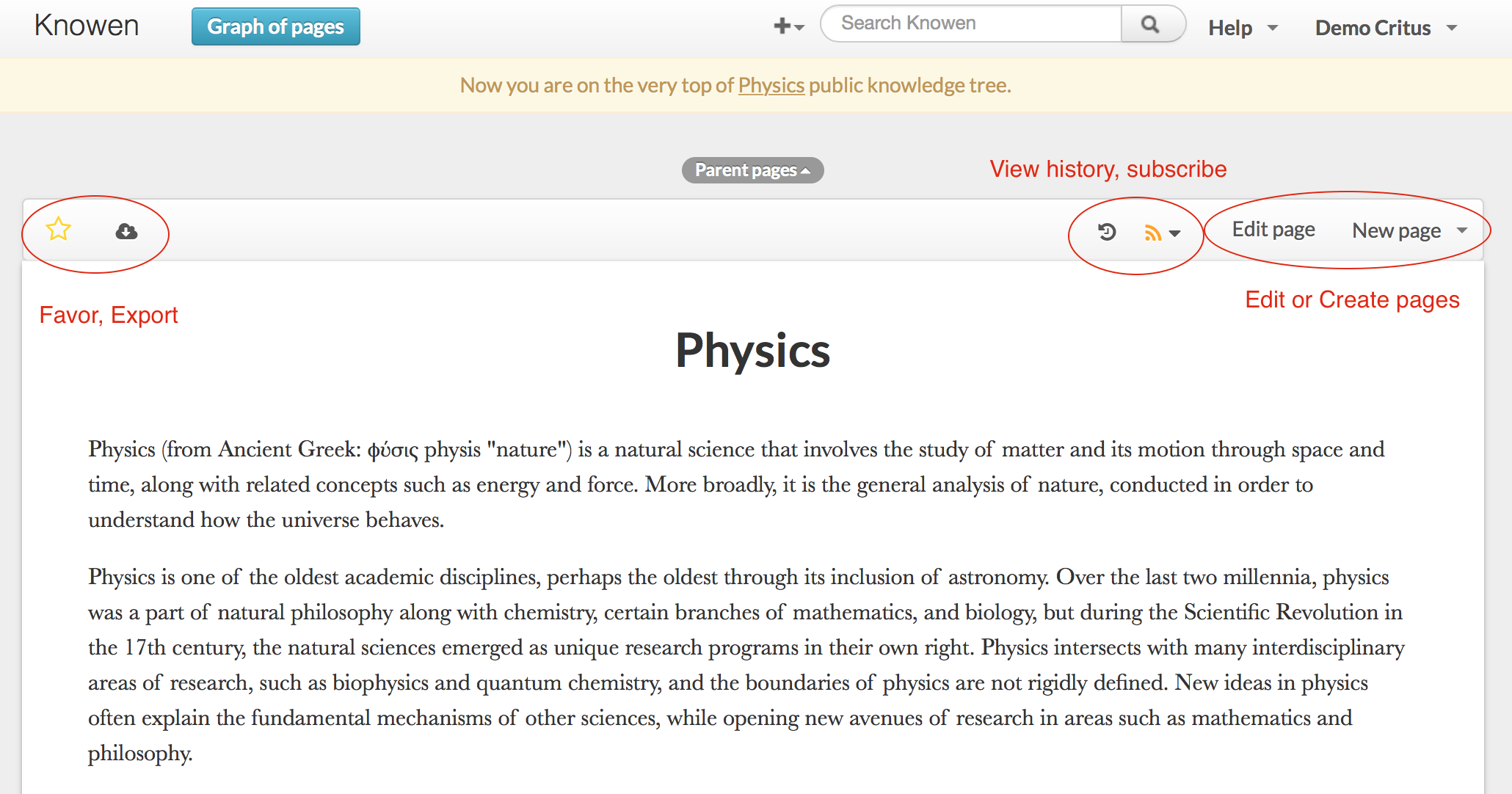
Private projects
Private project is a collection of connected pages (a knowledge graph), that is only accessible to you and your collaborators. You can create a private project from Dashboard. After putting in initial content and committing the change, the top node of your new private project is created. This node will appear as a child of Private Root, and is only accessible by you. (As you've probably guessed by now, alternative way to create a private project is by simply creating a child node of Private Root).
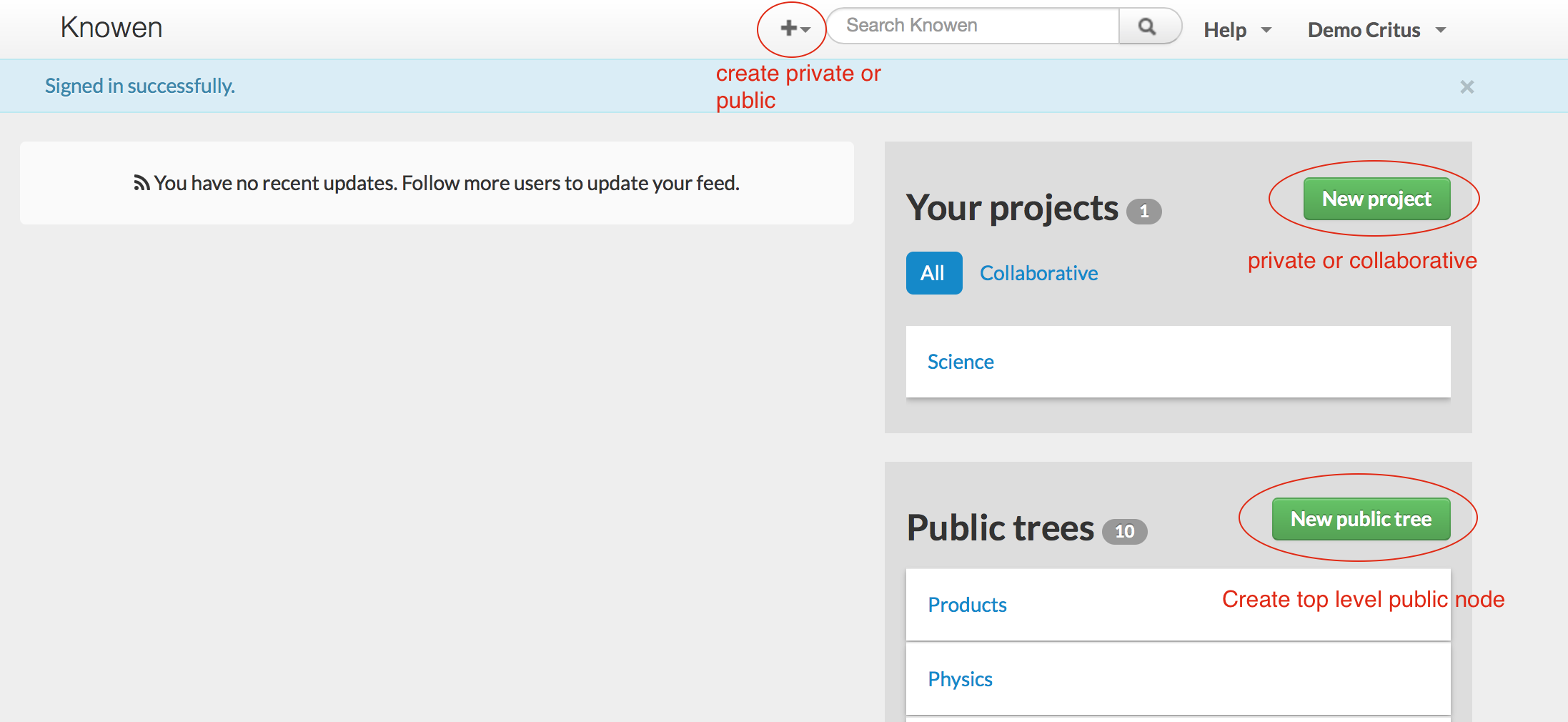
From the main view of the newly created node you will be able to view and add collaborators
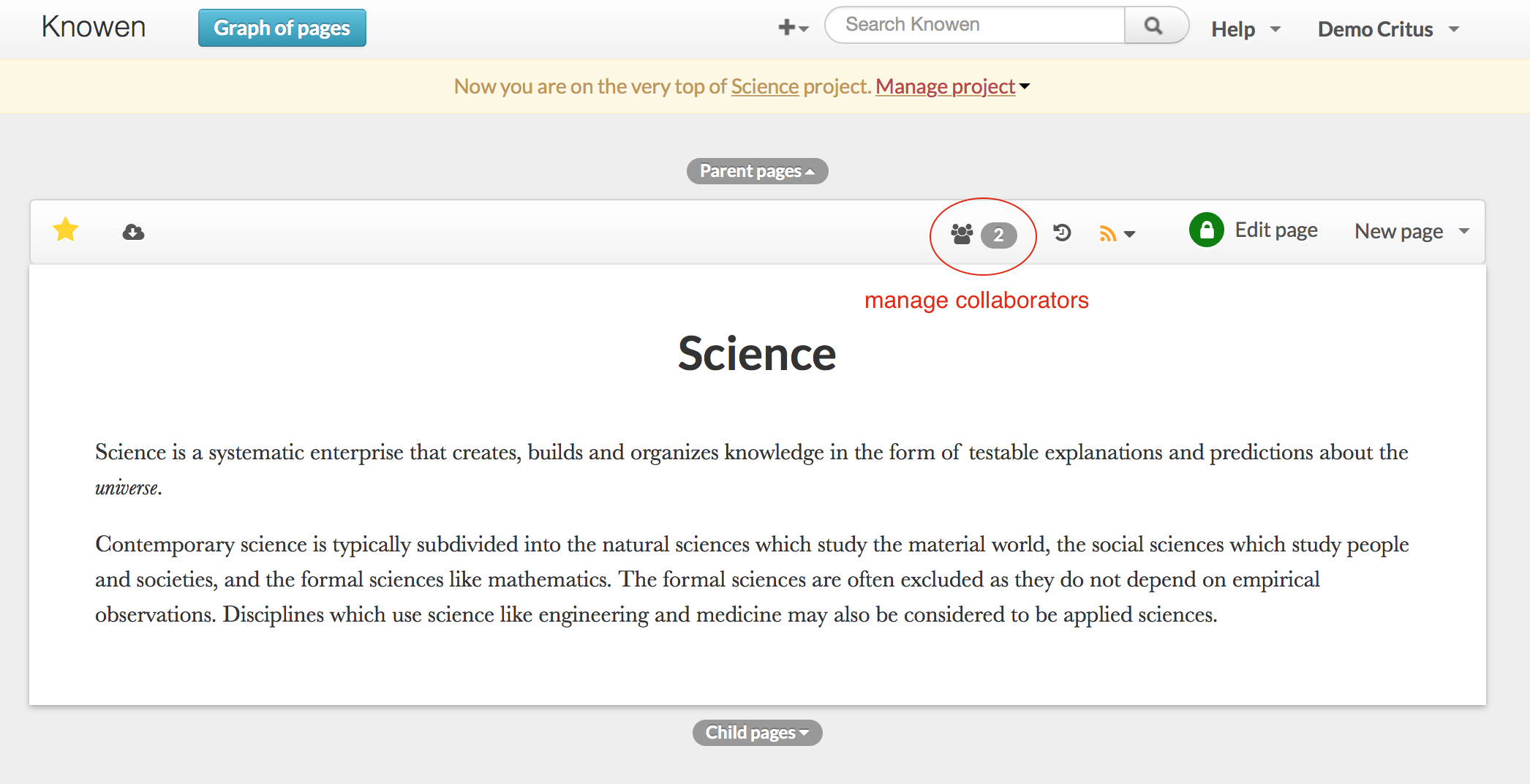
The private project "grows" by sprouting off descendant nodes. A good practice is to keep individual nodes compact; if a node grows too long to read in one sitting consider splitting off the details into descendant nodes, and keep only the essence in the current one. You will create a network hierarchy of content that will be pleasure to read and share with your collaborators.
Manipulating Private projects
A private project can be
- Merged with another private project by selecting a parent node from another accessible private project. Lists of collaborators of two projects become merged;
- Made visible from Public Knowledge graph by adding a public node as a parent of the top node of the project. This operation can be reversed by removing public parent node;
- Made fully public ("published") by adding a public node as a parent of the top node of the project, and removing Private Root parent.
These functions can be accessed from the top node of a private project.
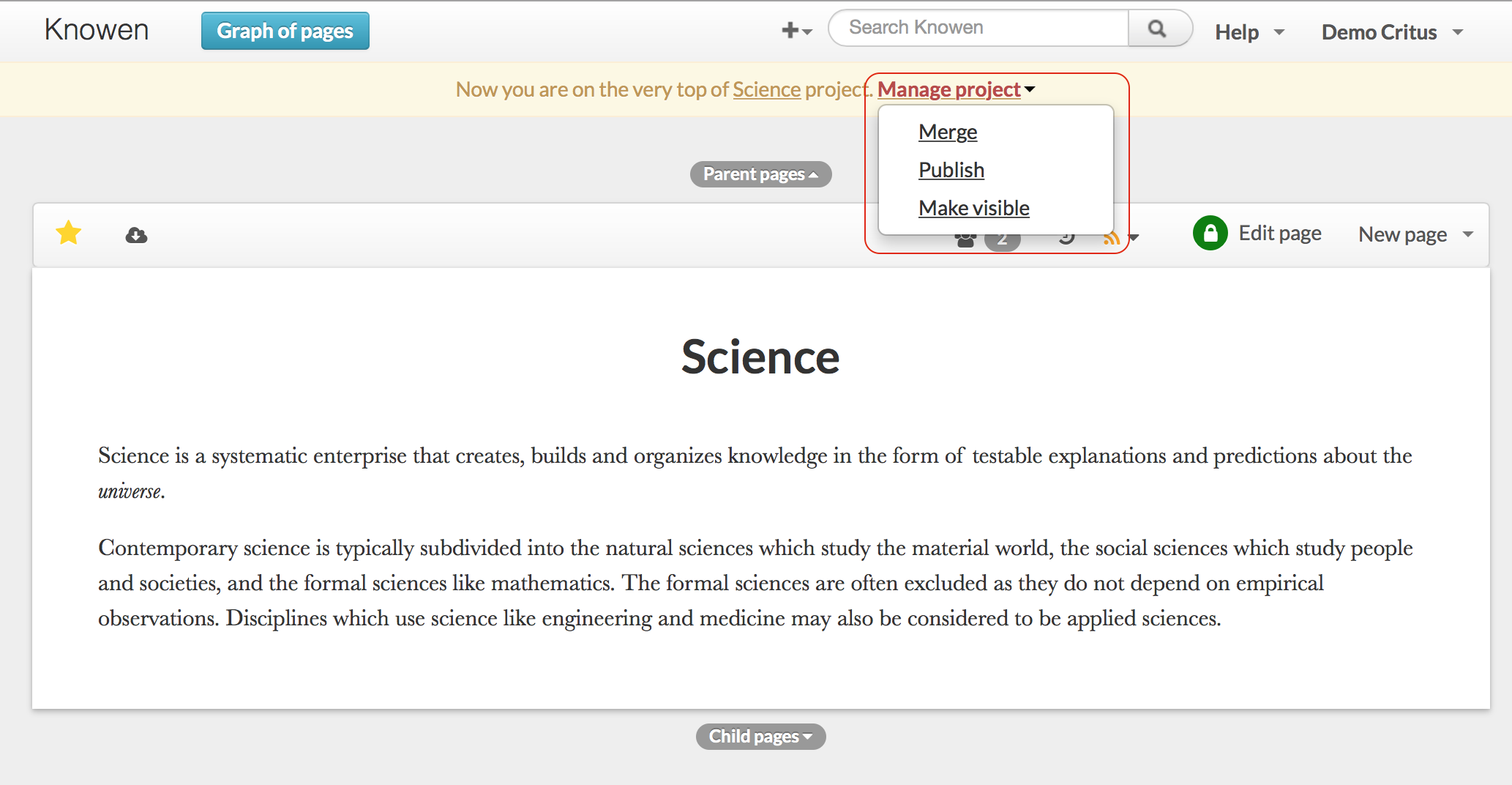
When a Private project is made publicly Visible, other users (not collaborators) can comment on the content, but not modify it. Great for collecting feedback on your projects!
When a Private project is Published, the access restrictions are completely eliminated and every registered user can not only comment on the content, but also modify it. This is a way to integrate your work into the public knowledge graph, preserving all the history of changes made by you and your collaborators.
Feedback and commenting on content
The key to creating and maintaining high quality content is communication between authors and readers. There are two primary commenting mechanism built into Knowen. Commenting on the pages (nodes), as a whole
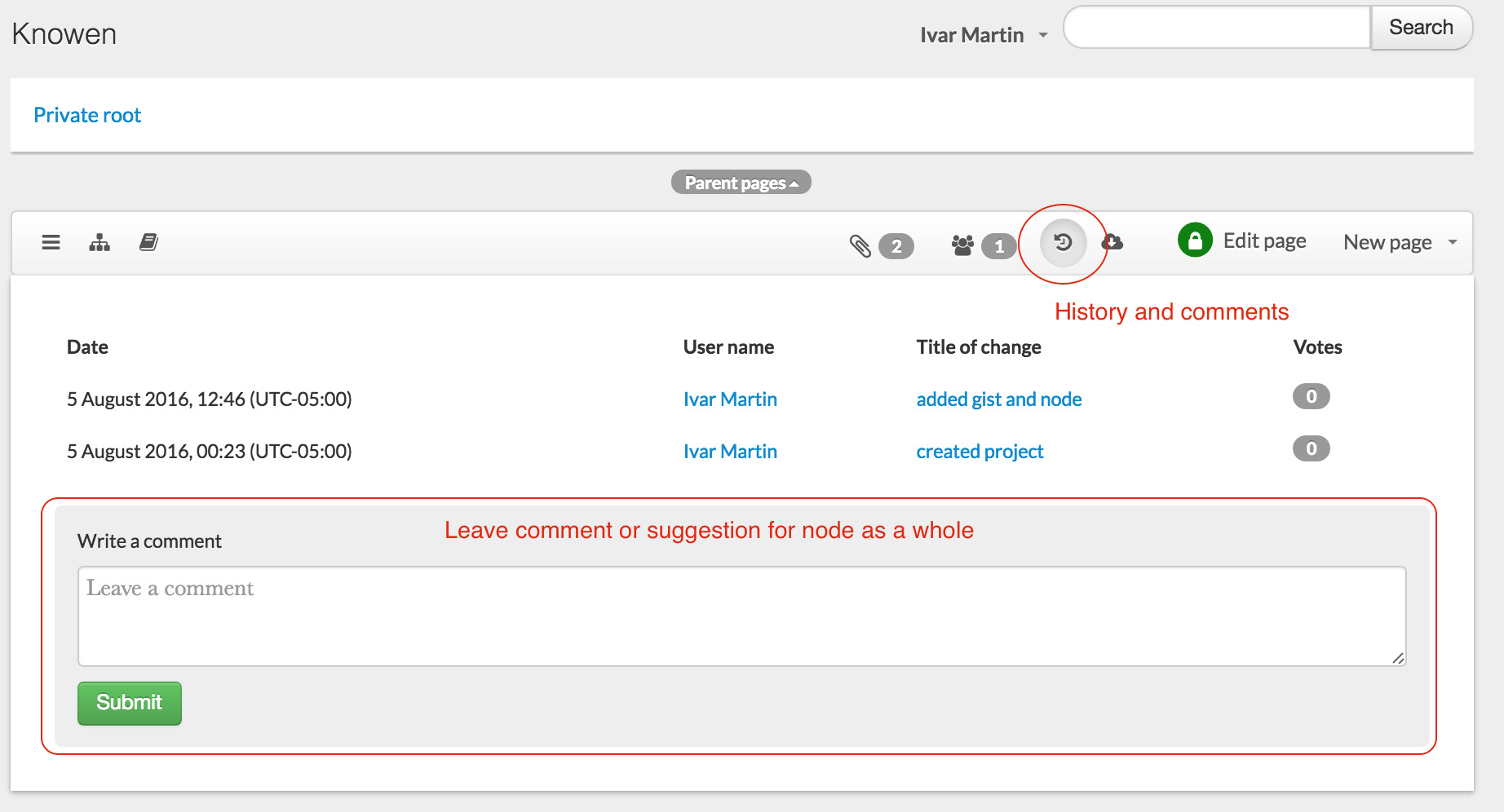
and commenting on individual changes:
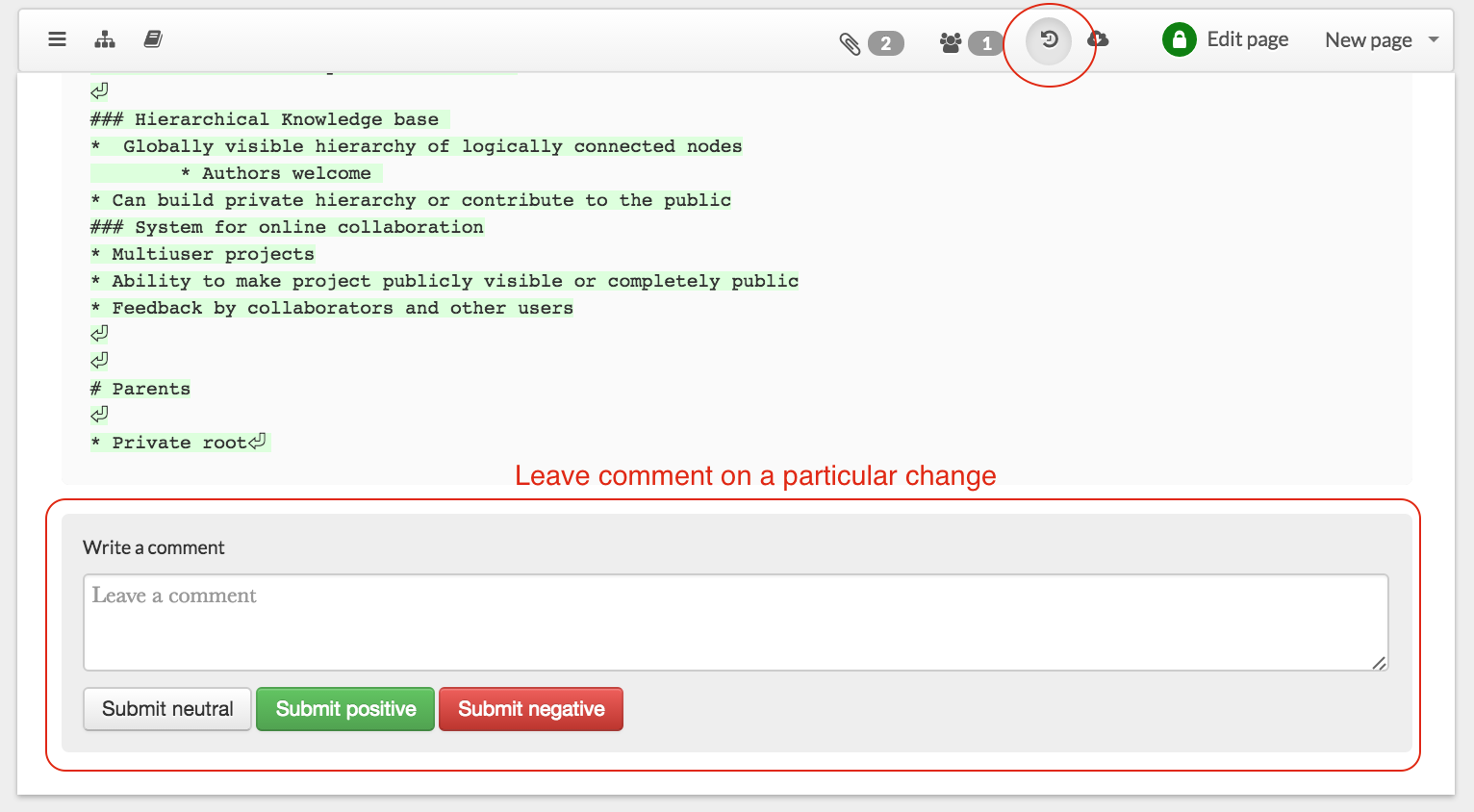
For details please refer to Commenting on pages and changes.
User reputation
No good deed goes unpunished, and the authorship of publicly visible content, and comments to it contribute to user reputation. The current reputation system is similar to Stack Overflow, and the reputation numbers can be seen on the User Profile page. Same page contains basic information on the user activity.
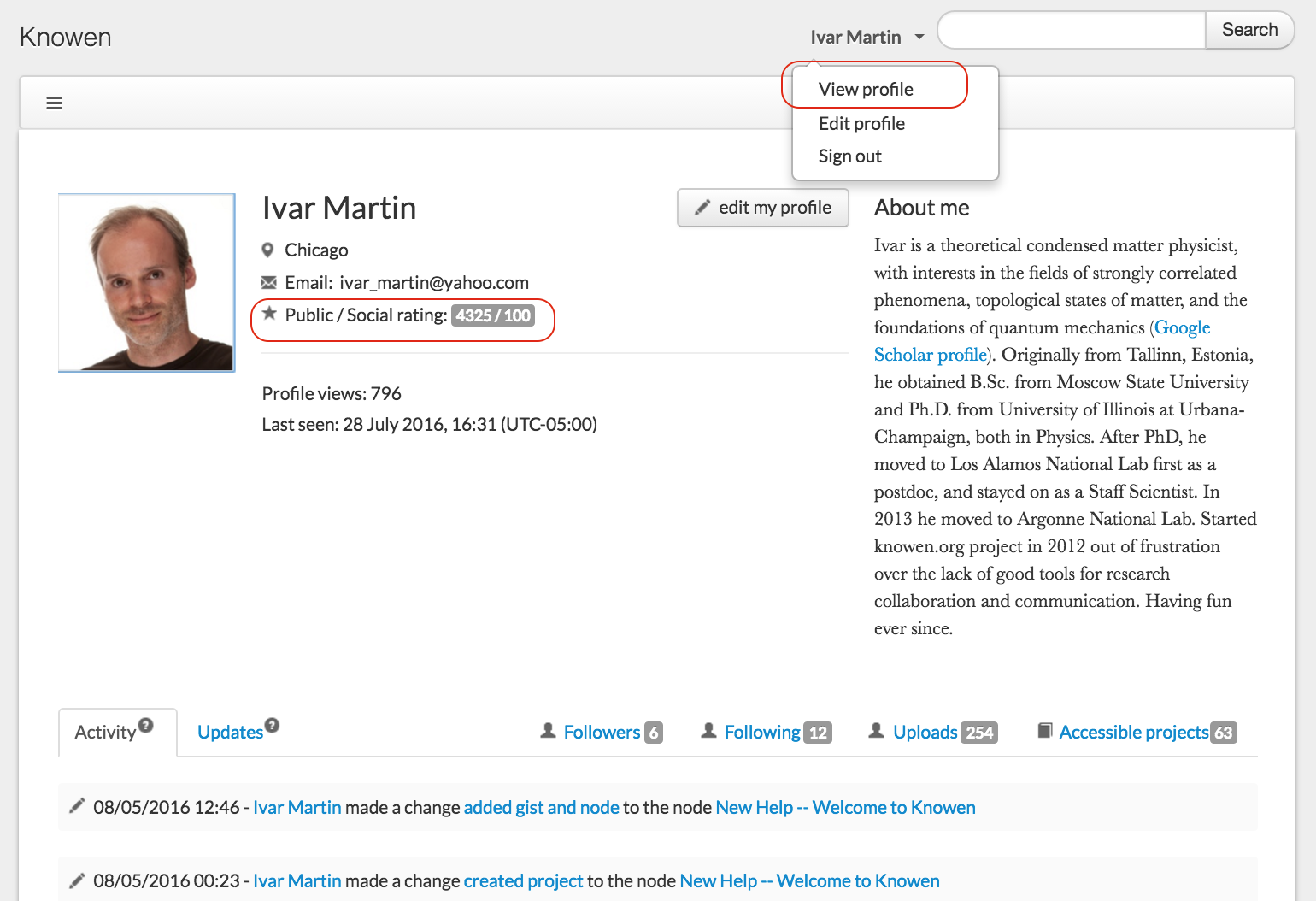
And that's pretty much it!
For more detailed intro, please explore the descendant pages of the current one!
If you notice some nasty bugs or have an idea how to make Knowen better, please drop us a line at Feedback page or write us an e-mail!
Examples of usage:
- Conduct research projects online/lab notebook: Energetic stability of quasicrystals
- Course lecture notes: Special Topics in Many-Body Theory, Spring 2016
- Workshop wiki: Light–matter Interaction ...